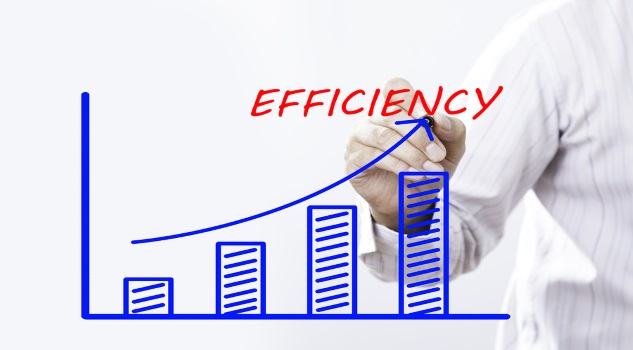A newly-released survey finds 82 per cent of Australian SMEs believe they are operating cost effectively. This is an increase on last year when 76 per cent of businesses reported being in a similar position.
This rise is supported by the fact that 51 per cent of those surveyed said they had implemented cost efficiency initiatives during the past 12 months. However, this number is down compared with last year when 65 per cent reported undertaking such initiatives. A further 21 per cent of SMEs indicated plans to implement cost efficiency initiatives during the coming 12 months, which compares with 13 per cent in last year’s survey.
“This year’s results demonstrate that strong efficiency improvements continue to be made by Australian SMEs,” said Antonio Leone, Marketing Manager ANZ, OKI Data Australia – authors of the 2017 OKI SME Business Efficiency Survey report compiled from the responses to an online survey of 3000 SMEs across all Australian states.
“However, the research also shows there are still significant opportunities for more to be done. It’s clear that one of the biggest limiting factors is a lack of available funds for investment.”
According to the survey, almost two thirds (59 per cent) of Australian SMEs spend less than $5000 a year on efficiency initiatives while 85 per cent spend less than $15,000.
“These spending levels mean that, while general IT projects such as hardware, internet connections and printers are affordable, higher-end projects are out of reach,” said Leone. “Topics such as Big Data and automation are often discussed, however financing initiatives in these areas is simply unrealistic for most SMEs. For example, our research found just 18 per cent have invested in automation projects.”
The research found that, during the past year, 74 per cent of SMEs made investments in general “efficient” IT technology. This included projects that boosted business efficiency such as development of websites, apps and ecommerce capabilities (nominated by 29 per cent of respondents), and digital marketing and online advertising (28 per cent).
Asked to consider the factors limiting them from becoming more efficient, 26 per cent of SMEs nominated a lack of finance needed to make up-front investments. This was followed by a lack of skilled staff (24 per cent) and technology challenges such as slow internet connections and legacy equipment that was preventing them from taking advantage of cloud-based services (24 per cent).
These results differ only slightly from those of last year when 30 per cent of respondents nominated a lack of finance and 25 per cent a lack of skilled staff as their key roadblocks to improved efficiency. Over the same period, technology challenges as an inhibitor were nominated by 24 per cent – a sharp increase from 13 per cent a year earlier.
When it comes to taking advantage of any new business efficiencies that are achieved, more than a third (35 per cent) of survey respondents confirmed they are savings their efficiency savings rather than re-investing the money into other areas. At the same time, 23 per cent said they are investing the savings into finding further efficiencies while 22 per cent are re-investing to develop additional products and services.
“The 2017 survey confirms that, while there continues to be a lot of discussion around the benefits of running lean and efficient operations, SMEs are still on the hunt for fresh opportunities,” said Leone. “Unfortunately, a lack of funding is limiting the extent to which many can take advantage of powerful strategies such as automation.”













